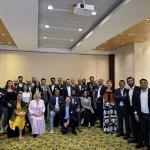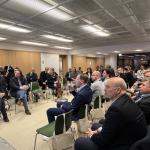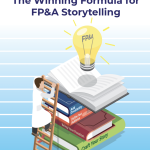The 7th in-person Copenhagen FP&A Board welcomed 36 like-minded FP&A leaders. FP&A professionals gathered in the cosy premises of the Business Centre Winghouse on April 11, 2024, to discuss the essentials of FP&A Storytelling.
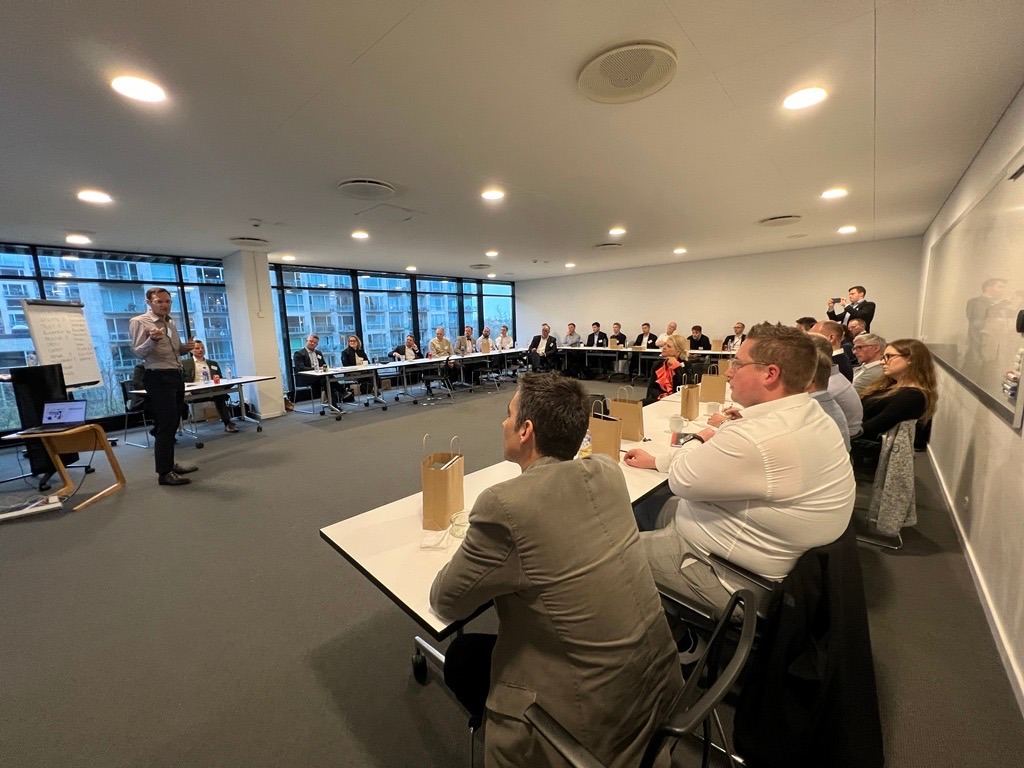
Figure 1: Copenhagen FP&A Board №7, April 2024
The participants represented a wide array of major companies and industries, including A.P. Moller-Maersk, LEGO Group, Mars, Storm Geo, Carlsberg, Danske Bank, Pierre Fabre, Arla Foods, HBK, and many others.
Introduction
After an initial networking session, all participants moved to the meeting room where Larysa Melnychuk, the Managing Director of the International FP&A Board, introduced herself and today's agenda:
- FP&A Storytelling: the latest trends and developments
- Discussion on the foundational elements for effective FP&A storytelling:
o a. Crafting the Narrative
o b. Visualising Data
o c. Harnessing Technology - The presentation of practical insights by Marianna Mølgaard, Finance Director at the Lego Group
- Small group work sessions
- Conclusion and recommendations
The meeting proceeded with brief introductions from all participants, including their respective companies, followed by everyone sharing what they deemed to be the most crucial skill for FP&A Storytelling. Some of the key components shared included the following:
- Alignment
- Visuals and Insights
- Speed
- Passion
- Simplification
- Purpose
- Loyalty
- Credibility
- Context
Subsequently, the discussion facilitator highlighted some of the most pertinent core success factors for FP&A Storytelling, identified by the International FP&A Board members at previous meetings.

Figure 2
On presenting these competencies in the picture above, Larysa raised the quote below:
“by 2030, 38.6 Million FTEs may be displaced by automation. Storytelling with data would be a skill differentiator for the FP&A professional of the future.”
Saurabh Jain, CFO Endovascular Robotics at Siemens Healthineers
The challenge was to assess whether storytelling stood as one of the key elements that Artificial Intelligence (AI) would not replicate. The Copenhagen FP&A Board then deliberated on whether AI could be utilised to structure the actual presentation. Additionally, most participants acknowledged that AI also presents an opportunity to streamline non-value-adding tasks in FP&A. This notion was reinforced by Larysa, who presented the following slide on current issues faced by FP&A professionals.

Figure 3
What is FP&A Storytelling
Afterwards, the board shifted towards defining FP&A Storytelling and its essence. One participant remarked that the necessity for elaborate storytelling was diminishing. Instead, quick storytelling in brief meetings lasting less than 20 minutes was becoming more commonplace in daily tasks. Storytelling must be agile.
The Copenhagen FP&A Board members were shown the definition of storytelling:
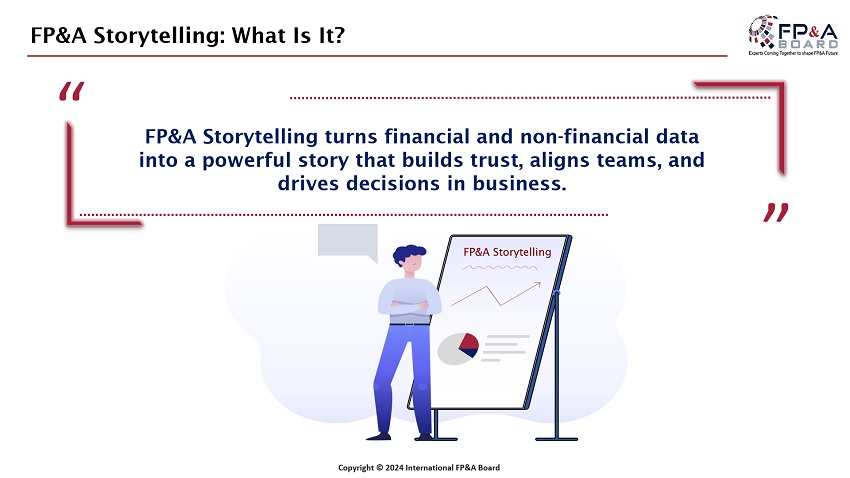
Figure 4
Larysa then recounted a case from her own past involving delivering a challenging story to the recipients, sparking a discussion among the participants on how this scenario could have been managed differently. The board attendees reached the conclusion that pre-alignment is crucial, emphasising the importance of the following:
- Preparation and strategic alignment with the appropriate stakeholders
- Understanding of the business context
- Patience is paramount. It's important to recognise that while the message might be new to the business, FP&A professionals have been working with it for some time. Thus, planting and nurturing the seed is essential.
Thomas Munk, Sales Director at IWG, shared his perspective as he more often was on the receiving end of such stories. The key for Thomas was:
- Understanding the rationale behind the recommendations (the "why")
- Knowing the practical steps for execution (the "how")
Matthijs Schot, CFO at Svitzer, shared his view on storytelling with a simple equation:
I (impact) = Q (Quality) x A (acceptance)
Matthijs emphasised that even though finance may excel in quality, the impact of the equation will be minimal if acceptance is lacking.
Three Building Blocks of Storytelling
Larysa shared the three building blocks of FP&A Storytelling, outlined in the picture below.
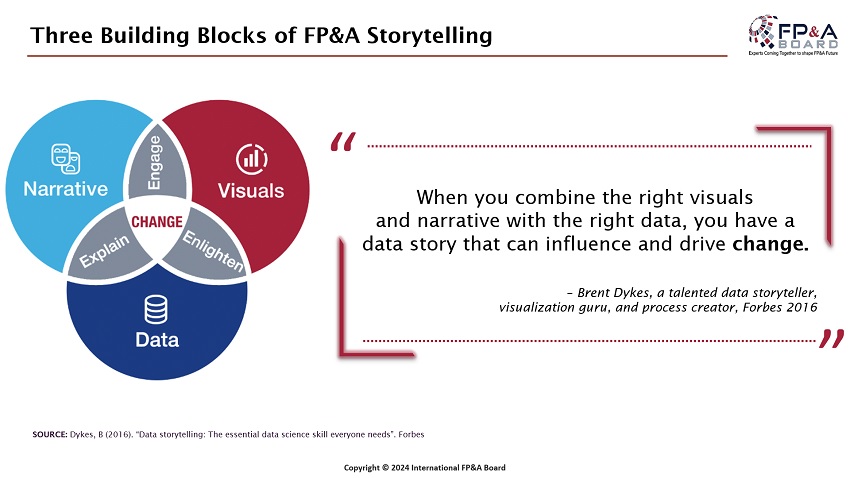
Figure 5
Marianna Mølgaard from the Lego Group offered her valuable experience and insights on the significance of narrative building and its three critical elements. Marianna presented two slides outlining her approach to storytelling and narrative. This was illustrated with a budget bridge, showcasing both a complex overpass and a simpler one with clear decision points.

Figure 6: Marianna Mølgaard shares her insights at the Copenhagen FP&A Board №7, April 2024
The key components in the two different approaches include clarity regarding what needs to be decided upon and reaching an agreement on the foundational aspects of the decision. This enables swift progression towards making the decision.
Group Work
The FP&A Board Members were split into three groups, each given a topic to discuss. The discussions were focused on the practical steps for each building block.
Narrative
Below are the key points for the group discussing narrative:
- Audience
- Purpose
- Creative
- Co-creation
- Fit to the context
- Follow-up
- Link to impact
- How to measure success
Visuals

Figure 7: Group Work at Copenhagen FP&A Board №7, April 2024
- 1 Picture is equal to 1000 words
- Utilise the executive summary
- Speed of absorbing
- Insights
- Tailor the visuals to insight, purpose, and audience
- Less is more
Data
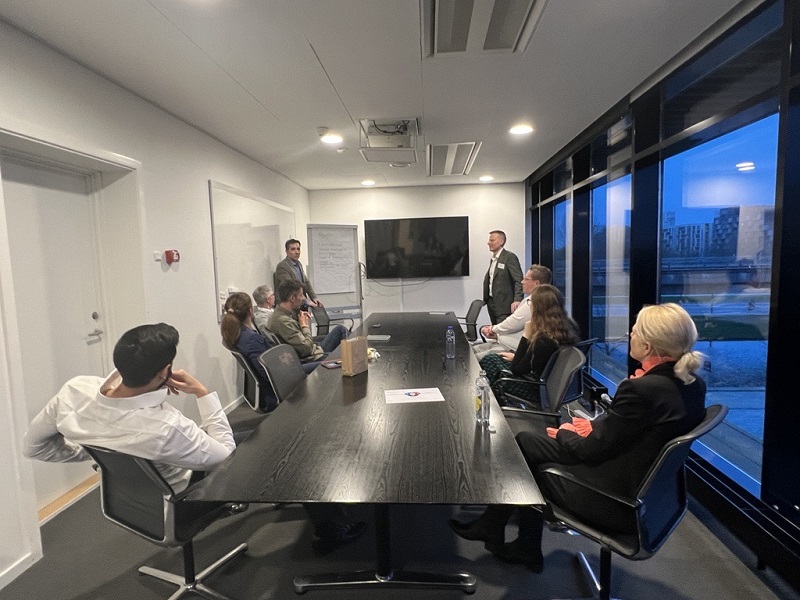
Figure 8: Group Work at Copenhagen FP&A Board №7, April 2024
- Key question
- Break down the drivers
- What is available
- Describe the business
- Common labels
- Data validation
Conclusion
During the Copenhagen FP&A Board meeting, attendees came to a consensus regarding the many significant obstacles affecting the traditional FP&A function's ability to effectively tell stories. Utilising the three abovementioned building blocks is essential to crafting an outstanding FP&A story, which is demanding and exhilarating. It requires continuous investment in resources, skills, and effort.
We extend our gratitude to Wolters Kluwer/CCH Tagetik for sponsoring this meeting. Special thanks to IWG for their assistance in organising this event and to our local partner, CFOPeople, for their tremendous help with the event.



